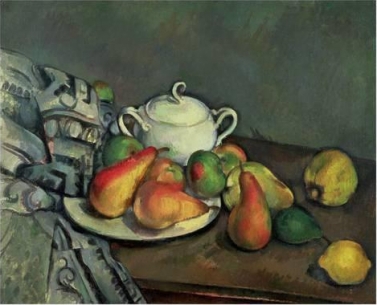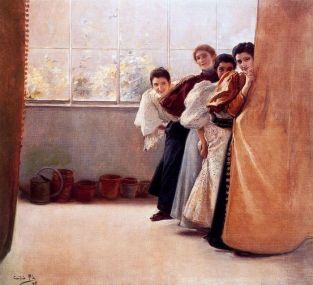
She leaves the olives in a plastic bag by themselves at the end of the register. It’s a quiet day, I am teaching one of my coworkers how to make tiny origami stars from strips of paper. It’s the first day of autumn and you can feel it, the summer plums turning over to the pears, the pace already beginning to slow. So she leaves the olives in a plastic bag by themselves at the end of the register and by the time I notice them there she is long gone. She doesn’t come back for them by the time my shift ends five hours later.But I make the arrangements, so that if she does, we will be ready with her olives. I write on my hand about them to copy into the book. Split green olives, 0.352kg, $8.80. I have carried her olives with me, taken them out of work, kept them with me all the way back home, I carry a part of her life until my next bath. I don’t remember her face, or her voice, or how her day had been. But I remember telling her that I was just going to put these ones in a separate bag because the containers tend to leak. So I’ve got to wonder what she wanted with them. I wonder whether she was going to serve them with cheese, put them on pizza, or bake them into bread. Maybe she was buying them for someone in particular, a gift for someone living at home or away.
I hope that she comes back for them.
Split green olives, 0.352kg, $8.80.
…
When I was a kid there was this blue painting in the hallway outside mum’s office. I thought it as so beautiful, and I remembered it for years even after she moved office. It’s huge, or at least it was huge to me then, blue circles overlapping each other like fish scales or umbrellas in a Broadway show. I always thought of them as umbrellas, but not of Broadway. I used it to find a little geography in the building she was in, because I knew that the hallway the painting was in was adjacent to the hallway that mum’s office was in. So, I would have to walk past it to get where I was going.
I didn’t know the word adjacent then. Or geography.
But when she moved back to the building years later, I looked for it, not as if I was looking for nostalgia, but as guidance, as though she might have moved back into her old office, regardless of who was there now. And I can still find it, it with it’s new name on the door, different posters and new artworks. I located the offices of her neighbors and friends, could remember the layout of their offices, their bookcases, desks and lamps. I remember the smell of the building, of the carpet and walls. I still smell it sometimes, from beneath the smell of costly renovations, painted walls and a different carpet cleaner. It smells musty, like an old armchair that the dust has settled on, and faintly of the eucalyptus trees that are everywhere on campus.
There was no reason to go to the library as a child, so I never did. It almost feels new now that I’m grown, sitting at the desks, trying to study. But in the old part there are still staircases where the brick has not been painted over, and the stairs are still polished concrete. Kind of dark, kind of musty, and not nearly as glamorous as the rest of the university tries to be. But they’ve started putting up artworks to ease the darkness, and there it is. Not quite itself, but there.
It takes me a moment to accept that its not the exact one. This one is longer, goes further up, but its the same thing. Blue umbrellas going all the way up to the ceiling, and it stops me in my tracks, because suddenly I feel as though I could recreate the office onto paper, the whole building. And not just in a moment, but in all the moments. That time that we tried to watch Star Wars on the corner tv, that time that mud wasps made nests in the gaps of the bookshelf, when I wrote a self-affirming note for mum on the back of her wrist support. I could reproduce it on top off itself, all of the memories stacking up like a manuscript of this one room, smell, and sounds, and touch, all at once, thousands of moments condensed.
And then it’s gone again.
And I’m standing in the stairwell, staring at this painting, trying to keep the memories all pinned down, certain and concrete like the stairwell itself.
…
I wonder about all the things I’ve told customers, I wonder about all the things they’ve told me, because I’m glad that they did. It’s a type of flattery, a kind of gift. But I don’t know why it is. I don’t know enough about humans to say why telling people things about your life feels nice, or why its nice to be given the things in return, but it is. And when they do I keep them with me, carry them around the way you wear a present the next time you go to coffee.

And suddenly I’m looking at this girl like we’re both foot soldiers in allied armies, struggling with the same things, offering and receiving sympathy and praise equally. Leaning over the register, talking all low and joking. She’s working at the pizza place next door, sometimes our customers double up, it’s too hot where I am too, we’re both trying to find a little balance between dead quiet and an overloaded server that’s beginning to smoke.
And it’s like camaraderie, but quieter, like a conversation you’re not allowed to be having.
…
I wonder about you, whoever you are. About whether you will carry this with you, whether it is okay to ask this of you. Whether you’ll tell people about this when they ask you how your day has been. I wonder how your day has been, whether that’s a question that I need to be asking. Because if you do carry this with you, even for a short time, then that it’ll at least be some kind of service, some sort of gift to me as well.
And it comforts be that I will always carry with me some stories that belong to people that I will never meet again, that I gave those stories to the people I live with, who may give them to the people they work with, stories told five times over written on bathroom stall walls. And we are all carrying other people’s stories, billions of circles all overlapping with all others, recreating ourselves as paintings on university walls.
We are the gifts we give each other.

This is another superlative piece, Clementine. It stayed with me as I ploughed up and down the pool. It is a remarkable insight into the importance of the gifts that we and others give, in whatever context. It helps me make sense of why I write – still – even after ‘leaving’ academia, which doesn’t seem to want to leave me. I don’t know if you’ve been following the strike action by academics in the UK, but a big issue is how free labour is overlooked, not counted, taken for granted. It is hard to remain altruistic in those circumstances, but they do. There’s areal sense of gift and vocation deeply sutured in there. You may be able to access (or Kate can) this piece from a colleague of mine on the gift of academia. https://www.triple-c.at/index.php/tripleC/article/view/892
I just love your work.
LikeLike
Thank you, Liz, for every comment you leave. It leaves me with a deep sense of satisfaction and humility, and I appreciate every word to write for me. I haven’t been following the UK strike action but under your encouragement I’ll check it out.
Thank you for everything.
LikeLike
I’ve been thinking about this lovely post over the past few days. Your thoughtful discussion of the stories that we carry around inside us, and that bond us all in a storied web, has helped me think through ideas relating to my research. I think that there is much to be gained from understanding how people share stories of illness, with whom and to what end, and also how “small” stories are told, listened to, and exchanged in healthcare settings to build trust and camaraderie, much like you did with the girl from the pizza place – you both had a shared sense of experience.
On a bit of a side note, I’m a big fan of the Australian artist Imants Tillers. Over the years, Tillers has faced criticism for appropriating Aboriginal imagery without permission. Recently I’ve been thinking about how appropriation, in the sense of borrowing from, being influenced by, finding inspiration in, or learning from other people’s artworks, is a practice very much akin to how storytelling works. We continuously reflect and draw upon the stories told to us by family members, friends, colleagues and strangers to help navigate our way through our own lives. And, like Tillers, we don’t always ask permission to pass on someone’s story to someone else. But by framing stories as gifts, you have opened up new ways of thinking about what it really means to ask others to carry our stories, and what others might ask of us in return for handling the stories that are in our care.
Thank you, Clementine. Your writing is a gift.
LikeLike
Hi Clementine,
I’ve just come across your blog and I simply had to let you know that your writing is gorgeous.
It’s humble, real and it feels like someone’s whispering the story to me. I’m too afraid to make a sound, click away or be distracted by anything else until I’ve finished reading.
Please keep it up. You never know who’s reading.
x
LikeLike
Hey Adelaide,
Thanks so much for commenting. It came out of the blue while I was standing in the kitchen and it felt so surreal to be caught so off guard by something so lovely. Thank you for coming into my life.
Xx
LikeLike